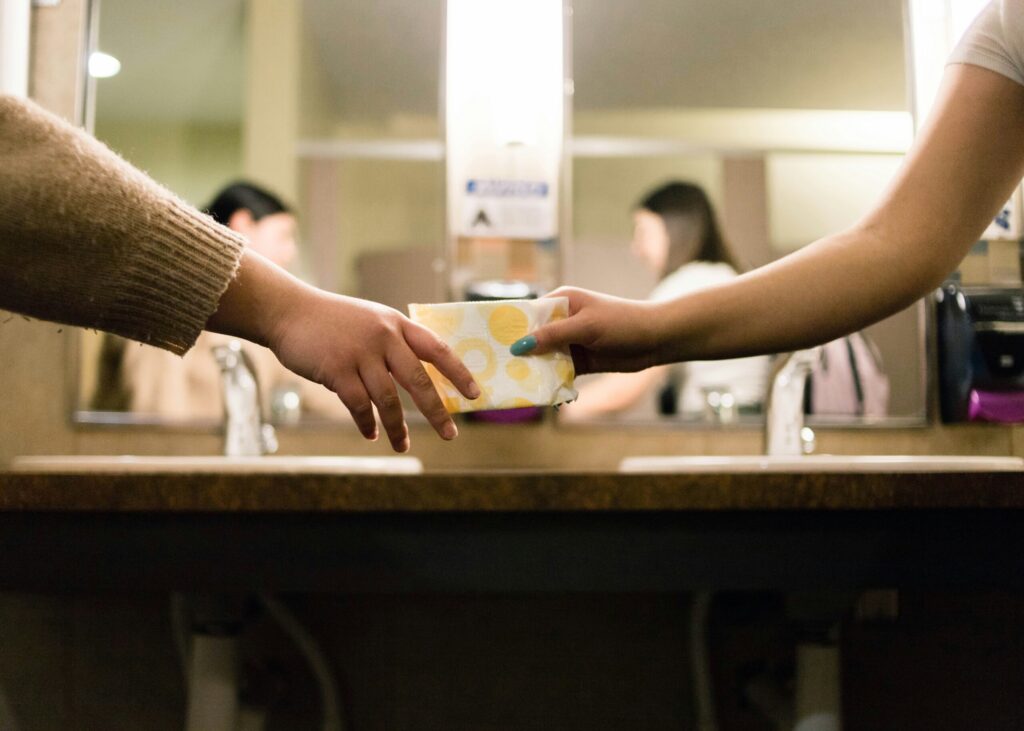When you have fibroids (benign uterine tumors) you may notice changes to your period. In fact, heavy menstrual periods are often one of the first symptoms that help women receive a uterine fibroids diagnosis. But what does a period with fibroids really look like? Here’s what you need to know!

When you have fibroids, your period flow may be heavier than it used to be. Additionally, your period may last longer than the 5-7 days that’s typical for most women. Plus, your period may come more frequently than every 28 days (the average cycle length for women, though many women have a cycle that’s naturally longer or shorter.) As a result, you may notice that you’re getting a period twice a month. And this could be because you have uterine fibroids.
Now, about that heavy flow. With these tumors, you may pass blood clots during your cycle. And, while some clotting is normal, clot size tends to be larger for women who have fibroids (as a rule of thumb, we suggest talking to your doctor if you’re passing clots that are larger than a quarter.)
Aside from changes to the flow and frequency of your cycle, a period with fibroids may be more painful. Many women with these tumors complain of cramping and pelvic pain. Plus, even when you’re not on your period, uterine fibroids can cause bleeding between cycles, as well as back pain, bloating, constipation, pain with sex and more disruptive symptoms.
Often, women dismiss changes to their cycle—even painful ones—as being a typical part of the aging process. Unfortunately, this often leads to delayed fibroids diagnoses—and leaves too many women suffering needlessly.
For that reason, we suggest mentioning any changes to your period to your doctor—this will help you receive an earlier fibroids diagnosis, and start you on the path to relief—often without the need for surgical intervention.
Why is it important to know what a period with fibroids looks like? Well, when we detect tumors shortly after they develop, they are likely to be smaller in size and fewer in number. In turn, this will allow you to find symptom relief with minimally invasive procedures such as Uterine Fibroid Embolization (UFE.)
With UFE, we can make a small opening, usually in your wrist, and insert an x-ray guided catheter to access your uterine artery. Once in place, our interventional radiologists in Houston can deposit embolic material to reduce blood flow to your artery—and your fibroids, starving them of oxygen-rich blood and causing them to shrink. Afterward, most women experience significant fibroid relief. And, they don’t need to undergo invasive procedures such as myomectomy or hysterectomy.
Of course, UFE will not be every woman’s best treatment option. But it can help many women find fibroid relief while preserving their uterus and avoiding invasive surgery. Ready to see if you’re a candidate for UFE in Houston? Click here to request an appointment today!

Scheduling
Please contact our dedicated specialists to schedule a consultation today.
2024 Houston Fibroids. All rights reserved. Website Design by Healthcare Success